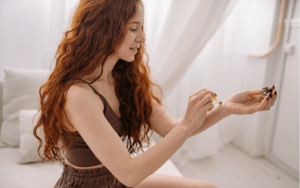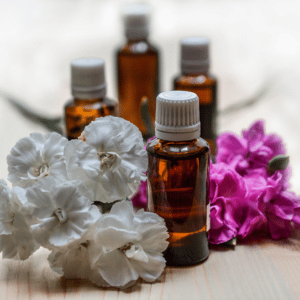Essential oils are plant extracts that are made by steaming or pressing specific parts of a plant in order to capture the fragrance-producing compounds.
Essential oils are a hot topic today in the world of health and wellness. Aromatherapy, the practice of using essential oils for therapeutic benefit, is a natural and complementary treatment to add to a wellness service like massage. While it is by no means a “cure” for serious diseases or illnesses, it can support the conventional treatment of various conditions and help to alleviate many of the discomforts associated with them.

How does it work?
When inhaled, especially through the nose, molecules in the essential oils travel through the olfactory system directly to the brain, delivering an instant impact to the limbic system—the part of the brain that controls a variety of functions including breathing, heart rate, blood pressure, memory, stress levels and hormone balance. Different scents have different chemical properties, so choosing which scent to use will depend on what emotional or physical concerns you are looking to treat.
There are some studies that indicate significant benefits to using essential oils, while other studies show no improvement in symptoms. If you are interested in learning more, we suggest taking a look at this extensive 2019 study by the National Institute of Health entitled: “Behavioral and Neural Changes Induced by a Blended Essential Oil on Human Selective Attention” (fair warning: it is extensive! But the abstract, introduction, and conclusion are worth a read).
At our massage studio, we have seen that aromatherapy can help promote relaxation and relieve:

- Nausea
- Bodily aches and pains
- Anxiety, agitation, stress, and depression
- Fatigue and insomnia
- Muscle pains
- Headaches
- Menstrual problems
- Menopausal problems
- Digestive issues
Learn the benefits of the most commonly used aromatherapy oils here.
How is aromatherapy used?
Aromatherapy can be used in several ways:
Indirect inhalation: The person breathes in an essential oil that is dispersed by a diffuser, which spreads the essential oil into the air, or by applying drops to a nearby tissue or piece of paper.
Direct inhalation: The person breathes in an essential oil using an individual inhaler that has droplets of essential oil floating in hot water.
Massage: In aromatherapy massages, the therapist applies a few drops of essential oil on their hands and has the client take a few deep breaths. The essential oils may also be mixed in a carrier oil, such as coconut oil, and massaged into the skin. Essential oils can also be mixed with bath salts and lotions. You should not apply essential oils directly to the skin without diluting them first.
At Healing Hands, we typically have the client take a few deep breaths of lavender at the beginning of the session; this helps them to relax and feel more calm and centered. Since we normally start the massage with the client facing down, we use eucalyptus after asking them to turn over; this helps clear the sinuses. We end our sessions with refreshing peppermint which helps make them feel more alert.
We hope to see you soon for your bit of aromatherapy and massage!
